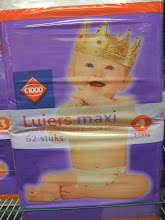
The purpose of a flash is to light a scene that otherwise doesn't have enough. But it's hard to know how much flash you need or what settings to use on your camera with or without a flash, so that's where a light meter comes in. There are several types of light meters:
Reflective Meters
These measure the amount of light reflecting off of a subject. You use this type of metering by pointing the meter at the subject. This type of metering is a little complicated, because someone in white will have more light reflecting off of them than someone in black even though (theoretically) they should turn out the same on film. However, this is the only type of metering you can do from a distance. You can use center weighted or spot metering (or matrix for computer controlled cameras). These all try to get the right exposure.
 Center weighted metering takes an average metering of the whole scene (as seen through the camera) with more emphasis on the center of the scene. This means you can take the contrast into consideration.
Center weighted metering takes an average metering of the whole scene (as seen through the camera) with more emphasis on the center of the scene. This means you can take the contrast into consideration.
Spot metering focuses on a small portion of the scene (1-5 degrees of the angle of view). This means you can measure the contrast in different portions of the image to make sure it's alright.
Incident Light Meters
These measure the amount of light falling on a subject (as opposed to the light reflected off of them). Usually it's measured through a small white dome on the metering cell. You measure incident light by pointing the meter towards where the camera will be while standing in front of the subject. The meter measure the amount of light falling on the subject and gives you a number from that. Incident is easier to use than reflective, because you don't have to calcualte the amount of gray, etc.
However, "neutral gray" varies between companies, so it's necessary to adjust the meter to the type of film you use, how you develop it, and what type of detail you want in your print (shadows vs. highlights, etc.).
Flash Meters
Flash meters measure the amount of light in a flash (if the scene needs a flash), so you can adjust your settings accordingly.

Flash is used to produce instantaneous artificial light for a scene that is otherwise too dark for appropriate exposure, freeze an image, or creating a different temperature light. Flashes can be built-in to the camera, manually connected via a hot-shoe, or external (stand-alone) and connected by a cable, light trigger, or radio transmitter. Initially, the flash bulb was used, an old type of lightbulb that would flash brightly for the picture, but took longer to ignite fully. Modern flash units, however, are typically electronic xenon flash lamps. These are made from tubes filled with xenon gas, these are electrically charged and produce a short, bright flash. You can also use a fill-in flash to give better ambient light. Another method of getting flash like fill-in flash is to "bounce" it- to point the flash onto the umbrella so it bounces onto the subject. this makes the light less harsh and more natural. It also gives less bright highlights and less dark shadow s. However, it takes more flash power to do so.
s. However, it takes more flash power to do so.
 s. However, it takes more flash power to do so.
s. However, it takes more flash power to do so.When using flash, there are several important things to remember. First, don't have the flash too far away from the subject (especially with built-in flash) or the picture will be grainy. To prevent this, don't stand farther than 3 meters away from the subject. Another problem is that sometimes the flash is too fast for the camera- to solve this you should slow down your shutter speed so that the light is sure to get in. Red eye is a common problem resulting from flash as well. This is caused by the retina immediately reflecting the light back. To avoid this you can either have a "pre-flash" that causes the pupil to contract, or bounce the light.
 This is an example of image taken using a high-speed flash to get a freeze-frame effect.
This is an example of image taken using a high-speed flash to get a freeze-frame effect.
)







No comments:
Post a Comment